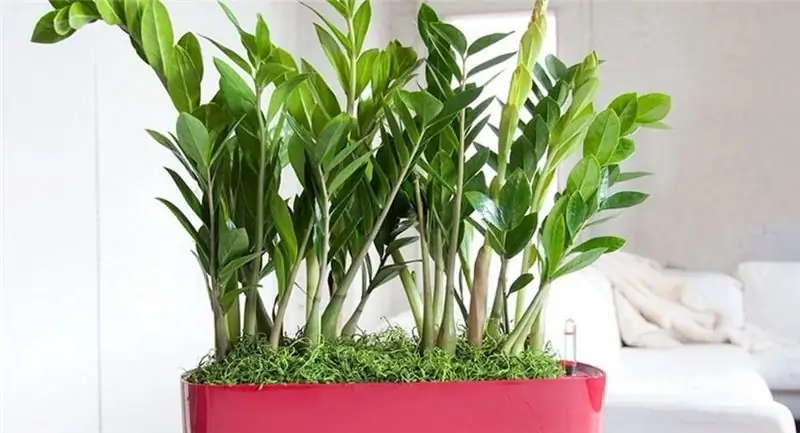index
Presentation
The Zamioculcas, also known as the ZZ plant, is an indoor plant appreciated for its beauty and popularity in landscaping. Originally from Africa, it has gained prominence due to its resistance and ability to thrive indoors in low light.
The exuberant beauty of ZZ Plant’s glossy, dark green leaves makes it an elegant choice for decorating indoor spaces, from homes to offices. Its ability to adapt to adverse conditions makes it a versatile choice for a variety of decorating styles.
Despite its robustness, knowing how to care for it properly is fundamental to maintaining ZZ Plant’s health and vigor. From watering to proper lighting, every aspect of care plays a crucial role in ensuring that the plant continues to thrive and beautify the environment.
Discover in this guide the essential steps to ensure that your ZZ Plant grows healthy and lush. Let’s explore together the fascinating world of this unique plant and unlock the secrets to cultivating a vibrant ZZ Plant in your space.
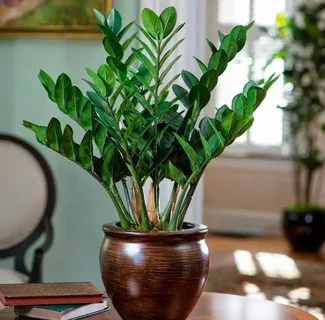
Common Varieties for Gardens
1. ZZ Plant Zamiifolia
The most common variety, ZZ Plant Zamiifolia, has dark green, glossy leaves that resemble feathers. Its resistance and ability to thrive in low light conditions make it a versatile choice for a variety of environments.
2. ZZ Plant Raven
With even darker leaves, the ZZ Plant Raven is an elegant and modern variant of the plant. Its practically black leaves add a dramatic touch to the space, making it a popular choice for contemporary decor.
3. ZZ Plant Zenzi
ZZ Plant Zenzi is a compact variety, ideal for smaller spaces. Its arched leaves and manageable size make it perfect for shelves, side tables and other places where space is limited.
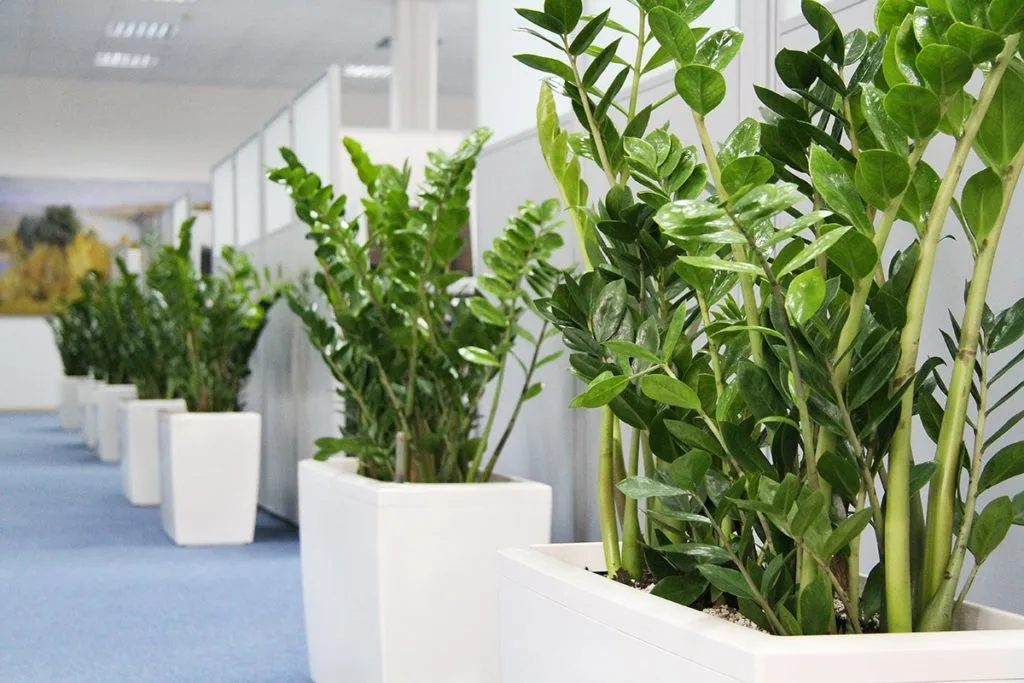
Peculiaridades Cativantes
In addition to its variety, ZZ Plant stands out for its particular characteristics that make it a popular choice among lovers of indoor plants:
- Drought Resistance: ZZ Plant is known for its ability to survive with little water, making it ideal for those looking for low-maintenance plants.
- Low Light Adaptation: Its ability to thrive in environments with limited lighting makes it perfect for offices and indoor spaces with few windows.
- Long-Lasting Foliage: ZZ Plant’s robust leaves maintain their lush appearance for long periods, providing consistent visual appeal.
Find out more about these enchanting varieties and how to incorporate the ZZ Plant into your interior spaces. Follow us on this journey of discovery and enjoy the lasting beauty of this unique plant.
Essential Care
Light
Internal Lighting Suitability
The ZZ Plant is known for its ability to thrive in low light conditions. Although it can tolerate shade, it prefers places with bright indirect light. Avoid exposing it directly to intense sunlight, as this can damage its leaves.
Soil
Drainage and Ideal Substrate
To ensure ZZ Plant’s well-being, choose well-drained soil. Specific mixtures for succulents or cacti are ideal, providing adequate aeration for the roots. Make sure the container has drainage holes to prevent excessive water accumulation.
Temperature
Adapting to Different Climates
ZZ Plant is very versatile in terms of temperature. However, it thrives in environments with moderate temperatures, between 65°F and 80°F. Avoid prolonged exposure to temperatures below 50°F, as the plant can be sensitive to cold.
By following these light, soil and temperature care guidelines, you’ll be creating the ideal conditions for your ZZ Plant to flourish. Enjoy the process of caring for this incredible plant and watch it thrive in your space.
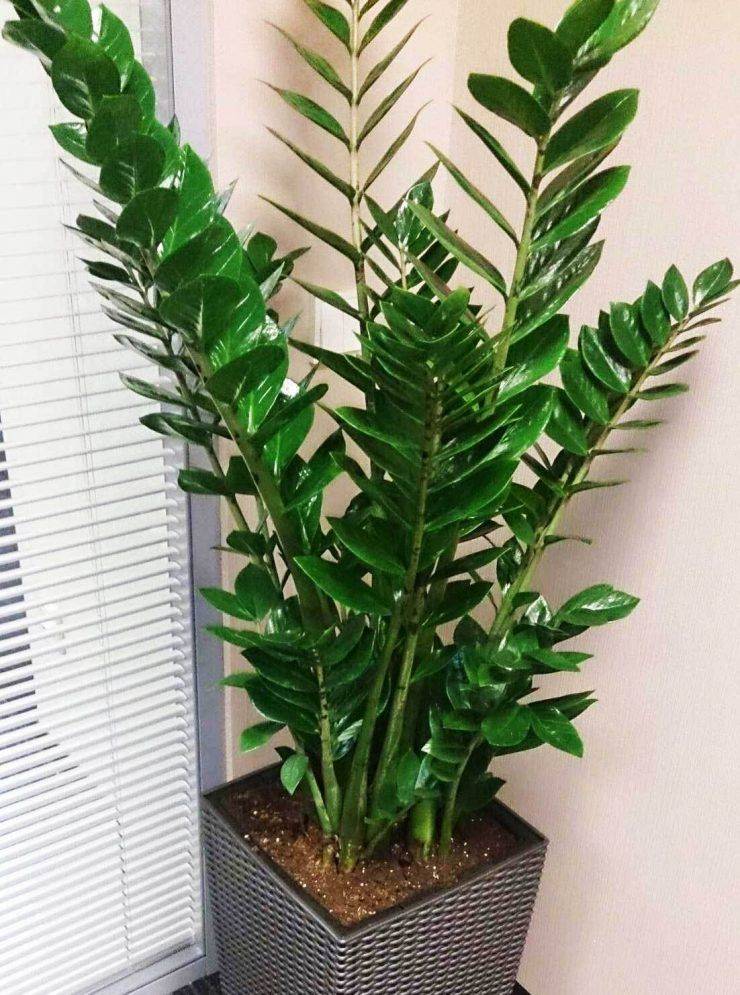
Water Care for ZZ Plant
Frequency and Quantity
Establishing the Right Balance
Keeping ZZ Plant’s soil moist, but not soggy, is essential for its healthy flowering. Here are some useful guidelines:
- Moderate Watering: ZZ Plant is drought-resistant and prefers slightly dry soil between waterings. The frequency can vary based on the environment, but in general, water when the top layer of soil is dry to the touch.
- Appropriate Quantity: When watering, make sure that the water reaches all the roots, but avoid excessive accumulation at the bottom of the pot. Proper drainage is crucial to avoid waterlogging problems.
Tips to Avoid Problems
Excess Water:
Avoid the risk of waterlogging, as excessive water accumulation can lead to root rot. Some tips to avoid this problem include:
- Use pots with drainage holes to allow excess water to drain away.
- Don’t allow water to stagnate in the bowl after watering.
Water shortage:
Despite ZZ Plant’s resistance to drought, a lack of water can also cause problems. To prevent the plant from dehydrating:
- Monitor the soil moisture regularly and adjust the watering frequency as necessary.
- Look out for signs such as wilted leaves, which may indicate the need for more water.
By following these watering tips, you will provide your ZZ Plant with the right water balance, promoting healthy and vibrant growth. Enjoy the journey of caring for this fascinating plant and see how it rewards your efforts with its lasting beauty.
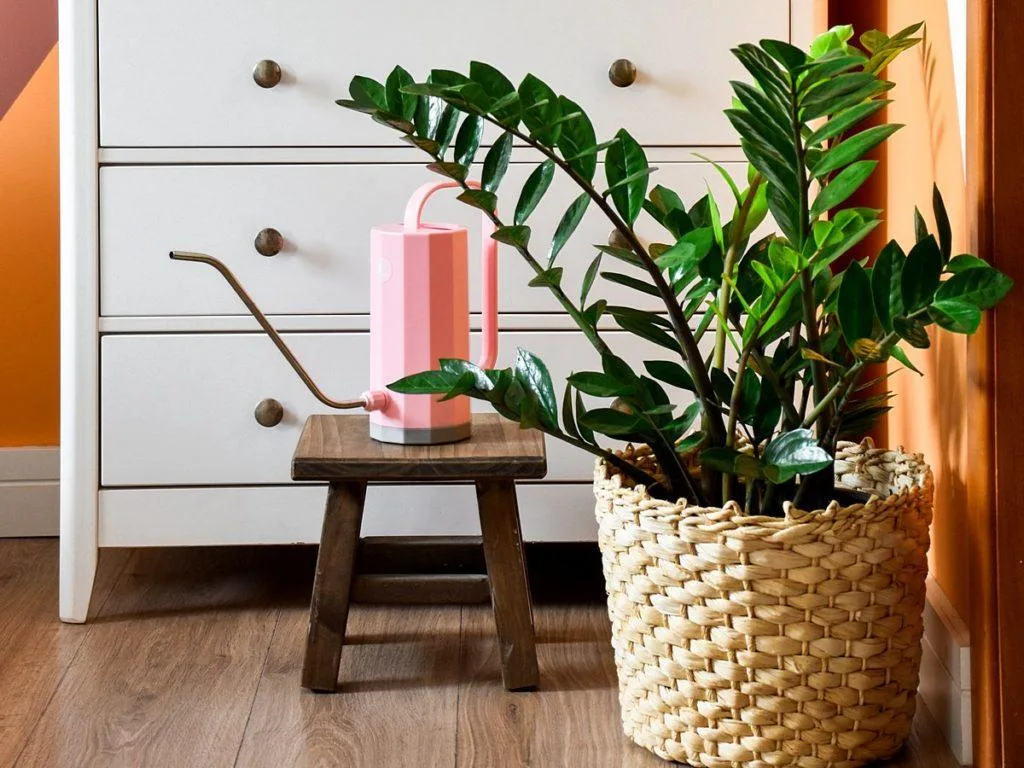
Nutrition for Healthy Growth from ZZ Plant
Importância dos Nutrientes
Foundations for Blossoming
To ensure ZZ Plant’s healthy growth, supplying it with essential nutrients is fundamental. Here are some guidelines on the key elements to keep your plant vibrant and lush.
Types of Essential Nutrients
1. Nitrogen, Phosphorus and Potassium (NPK)
These are the primary nutrients that play crucial roles in plant development. Make sure you choose a balanced fertilizer, with the right proportions of NPK, to promote ZZ Plant’s healthy growth.
2. Micronutrients
In addition to the main nutrients, ZZ Plant also benefits from micronutrients such as iron, zinc and manganese. Make sure you choose a complete fertilizer that includes these essential elements.
Adequate fertilization
Choosing the Right Fertilizer
When selecting a fertilizer for ZZ Plant, opt for a balanced formula, such as a general liquid fertilizer for indoor plants. Avoid slow-release fertilizers, as ZZ Plant does not require frequent feeding.
Application Frequency
- Spring and summer: During the months of active growth, apply the fertilizer every 4-6 weeks.
- Autumn and Winter: Reduce the frequency to one application every 6-8 weeks, as the plant enters a period of slower growth.
Remember to follow the instructions on the fertilizer label to avoid overfeeding, which can be harmful to the ZZ Plant.
By providing the right nutrients, in the right quantity and at the right frequency, you will be promoting an ideal environment for the healthy and robust growth of your ZZ Plant. Enjoy the experience of caring for this unique plant and watch it thrive with the right nutritional care.
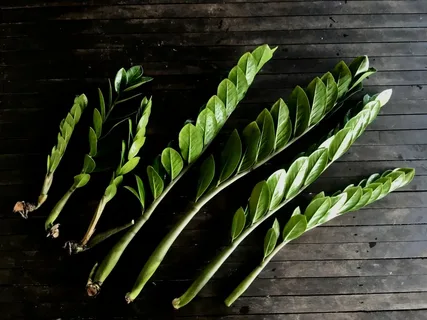
Poda da ZZ Plant
The importance of pruning
Stimulating Flowering and Aesthetic Control
Pruning is an essential practice for keeping ZZ Plant healthy and visually appealing. As well as promoting flowering, pruning is an effective tool for controlling the size of the plant, ensuring balanced and aesthetically pleasing growth.
Step-by-step instructions
1. Suitable tools
Make sure you use sharp, clean tools to avoid damaging the plant. Quality pruning shears or loppers are ideal for precise cuts.
2. Removing Yellowed or Damaged Sheets
Start pruning by removing any yellowed, damaged or dead leaves. Cut close to the base of the plant to encourage the healthy growth of new shoots.
3. Height control
To control the size of the ZZ Plant, cut the longest stems to the desired height. This helps keep the plant compact and appropriate for the space.
4. Removing unwanted branches
Identify branches that are growing uncontrollably or in undesirable directions. Cut these branches to direct growth and maintain the desired shape.
5. Stimulate Flowering
To promote flowering, remove wilted flowers and any part of the plant that looks congested. This directs energy towards the development of new flowers and leaves.
6. Beware of Propagation
If you want to propagate ZZ Plant, pruning can also be an opportunity. Cut healthy stems into segments and plant them to grow new plants.
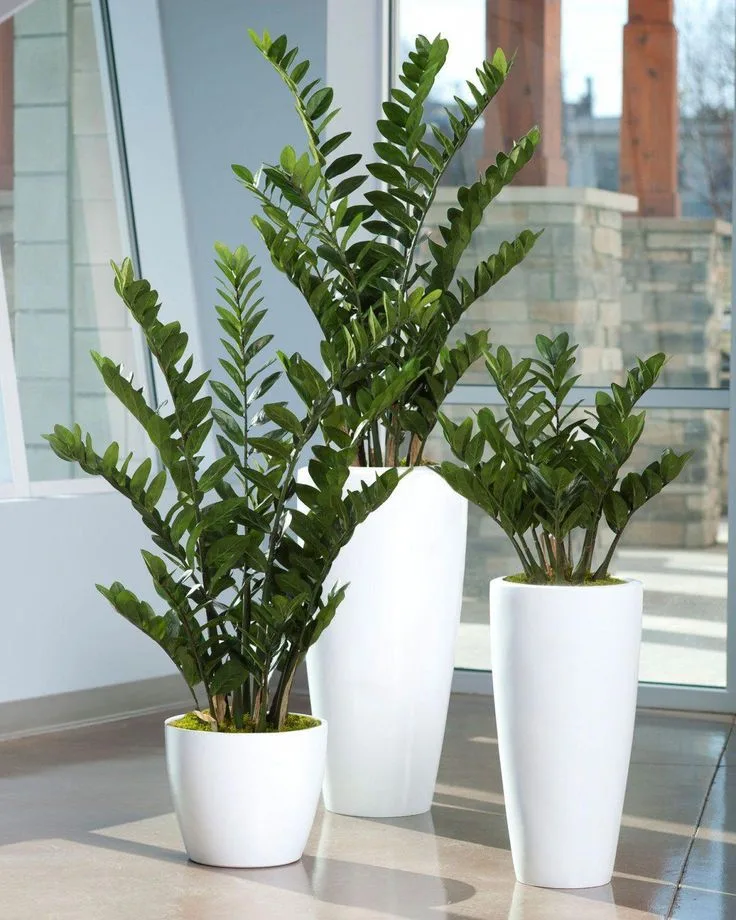
Conclusion
In recapping the main points to ensure successful ZZ Plant care, we highlight the importance of meeting the specific needs of this unique plant. From the right choice of lighting and soil to the conscious practice of watering, nutrition and pruning, every aspect contributes to ZZ Plant’s healthy flourishing. Dedication to gardening is an ongoing journey, and by following these guidelines, you not only foster an environment conducive to the growth of ZZ Plant, but also experience the gratification of seeing a stunning garden develop over time.
In the world of gardening, patience and commitment are rewarded with the lasting beauty of plants. By cultivating your ZZ Plant with care and attention, you establish a link with nature and transform your space into a green oasis. Keep honing your gardening skills, adapting to your plant’s needs, and allow yourself to enjoy the fruits of your labor as you witness the ZZ Plant’s lush blooms in your garden.
Frequently Asked Questions
How can we not let ZZ Plant die?
To ensure that the ZZ Plant stays healthy and vibrant, avoid overwatering, as waterlogging can lead to root rot. Make sure the soil is slightly dry between waterings, providing ideal drainage conditions. Also, choose a pot with drainage holes to avoid excessive water accumulation.
How to care for the ZZ Plant in a pot?
When caring for ZZ Plant in a pot, it is essential to ensure well-drained soil and choose a container that allows adequate water to escape. Make sure not to over-water, observing the plant’s individual needs and adjusting the frequency accordingly. Keep the ZZ Plant in an environment with bright indirect light, avoiding direct exposure to intense sunlight.
Where is the best place to put ZZ Plant?
The best place to put ZZ Plant is indoors in bright indirect light. It thrives in low light conditions, making it ideal for shady areas. Avoid direct exposure to bright sunlight, which can damage the leaves. ZZ Plant is versatile and adapts well to different spaces, from offices with limited lighting to residential areas with filtered light.


